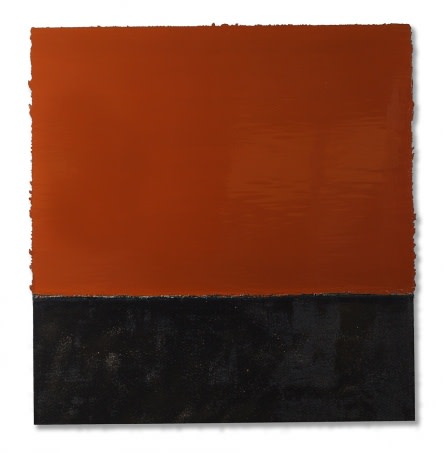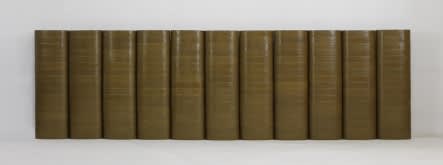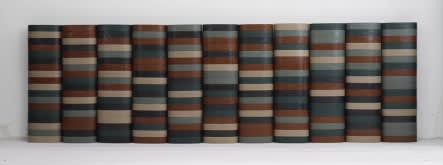HUH Myoungwook: Overlaying
Arario Gallery Seoul will present “Overlaying”, a solo exhibition of Huh Myoungwook (b. 1966) from October 27th to December 4th. This exhibit will extensively showcase Huh’s oeuvre, introducing 10 new works of lacquer paintings, installation work, video, photograph and etc. The exhibition title, “Overlaying”, travels further from the dictionary definition of ‘spreading, applying’, and signifies painting by the ‘overlaying of time’, a gesture incalculably repeated by the artist.
Lacquer paint, which remained as the finishing coat in the production of furniture or wooden lacquerware within the ancient history of Korean crafts, records the ‘austerity of time’ in the recent flat painting series of the artist. The specificity of the natural material of lacquer paint bearing the peculiar quality of ‘half-tint’ has a high chroma, and Huh had repeated the gesture of overlaying various colors over long period of time, not only on canvas but also on a self-produced metal drawing board. Such overlaid traces are visualized in the boundary traversing upon the polarized domains of the plane, inviting the audience to experience the weight of time.
It takes nearly three to four months painting ‘unrefined lacquer’ as ‘black lacquer’ with countless strokes in the indoor environment of summer-like high temperature and humidity, maintained with temperature over 30 degrees and 70% humidity for a year. After this, the hemp cloth covering the metal canvas is incised and the setting coat is applied, then the time of the picture frame is suspended. If this suspended time represents the artificial time set-up by the artist, in other words, man, then the domain in contrast alludes to the time, vanishing by natural time. For example, Huh used the unchangeable 99.9% gold plate in three of his Untitled series. The unchangeable gold, which symbolizes men’s desire for eternity in the face of time’s limitations, is juxtaposed in comparison to the half-tint with heightened chroma and clarity due to the attributes of lacquer paint. This exhibition intends to introduce the inventive pictorial expression of the artist, who approached on the perception of the essence apart from the phenomenal aspect of the object by applying layers of multiple colors on same site as in practicing asceticism for purifying oneself rather than expressing denotative energy.
To the artist, the trace and color made by time is the best media to project contemplation on dissipation, experienced by an object or an existence. And lacquer paint is the most idealistic media that ferments the thought of the artist. Since 2008, where Huh decided to use lacquer paint in place of regular paint used in Western painting, he continues pursuit of expressing the holistic time and space together with time in the direction of dissipation due to nature in contrast to the artificial time set by the artist, in other words, mankind.
The 187 objects coated with lacquer paint, presented in the 2nd floor gallery space were photographed and documented by Huh as soon as they were finished and then they were distributed to his acquaintances from various background, gender, age group residing in Korea and abroad. For six months, these objects were freely used according to each individual’s purpose of use and returned to the artist afterwards. On the other hand, another collection of identical objects are the ensemble, which have experienced time as they were exposed to natural light and wind for several months in the backyard of the artist’s studio. With the juxtaposition of the two installations, Huh intends to display the contrast between artificial change caused by human and natural environmental change, while voicing the development and trace of time.
Furthermore, we may catch a glimpse of Huh’s philosophy on temporality, in which he aims to speak through this exhibition by comparing photography works and installations. If he had captured records of objects symbolized after having gone through the hands of men or natural time in his previous works, he rather invites the audience to deliberate on time shared by men and nature by composing one installation space in this work.



























